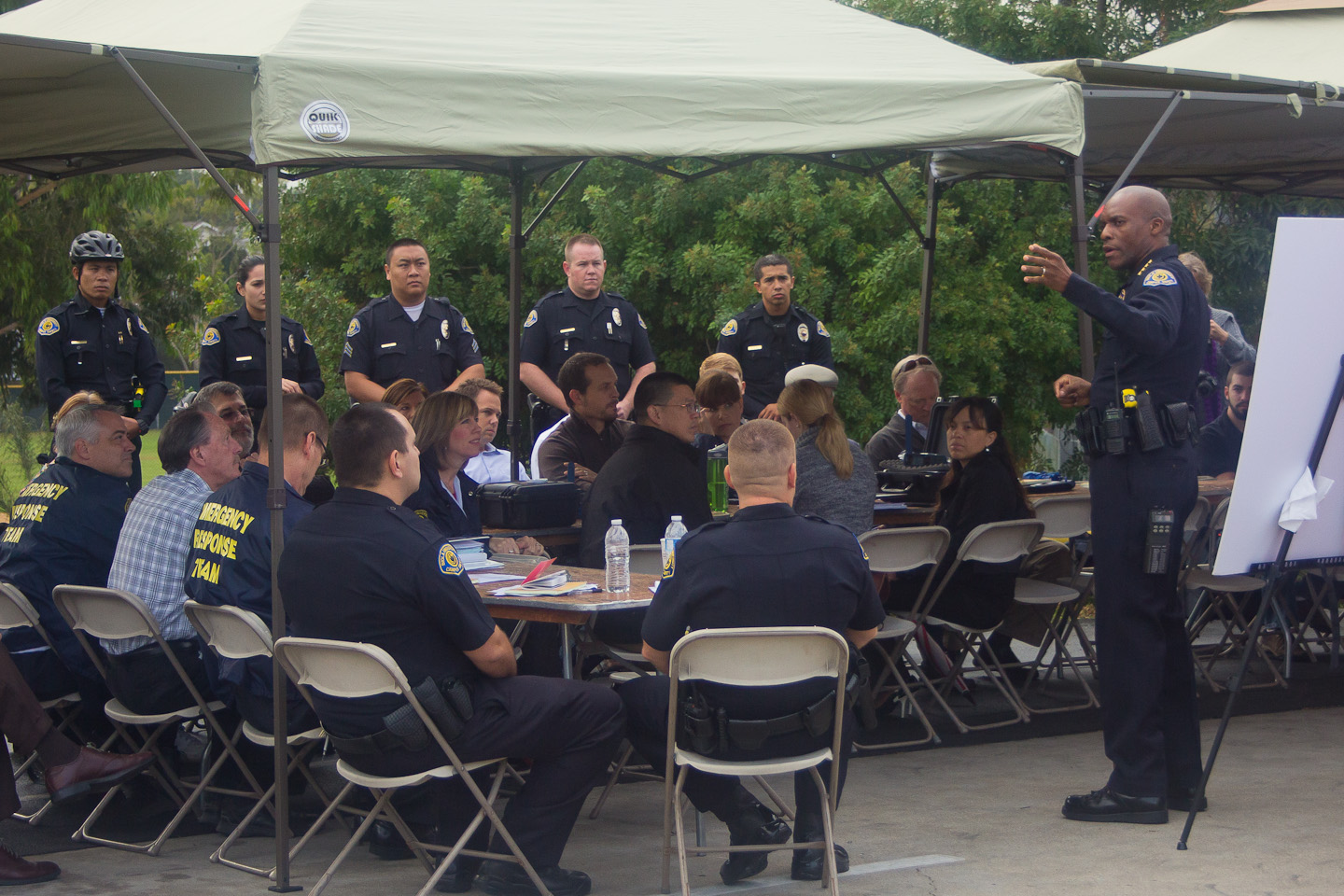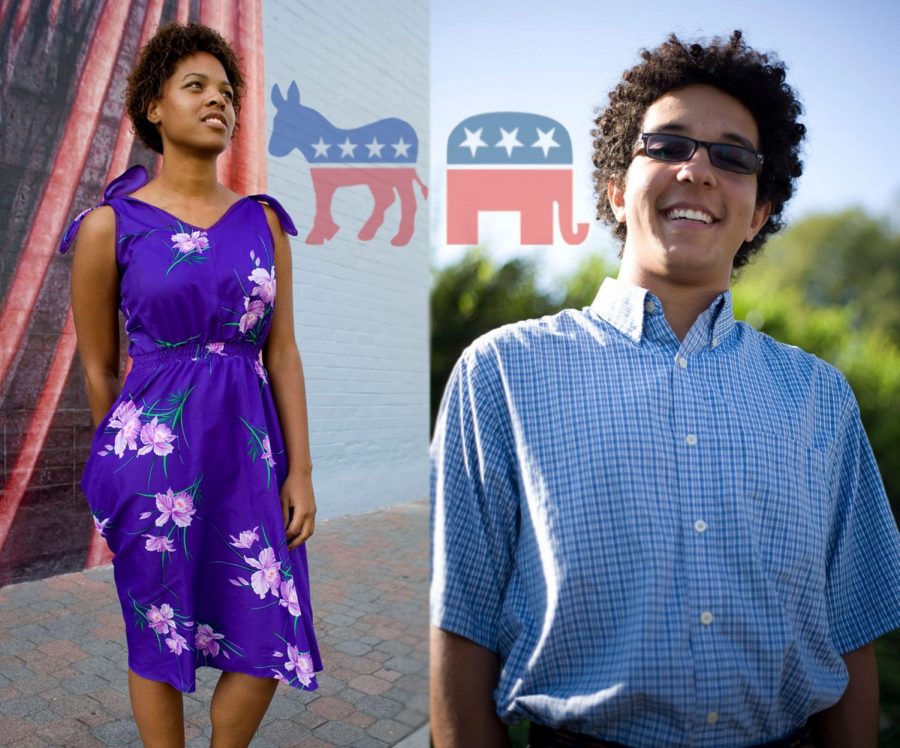Correction: The Azusa Pacific University observer at the drill was misidentified as Campus Safety chief Sean Kennedy. Lieutenant Jeff Joseph was in attendance. The Chimes regrets this error.
With a fictional report over the command post loudspeaker, Campus Safety began its first disaster drill with a full dorm evacuation since 2009.
An earthquake emergency scenario
“Around 9 a.m. a magnitude 7.8 earthquake hit Southern California,” the loudspeaker sounded. “The shaking lasted approximately 50 sec. You should be on high alert for major aftershocks. There are unconfirmed reports of structural damage, multiple fatalities and severe injuries. The weather is in the low 60s with an 80 percent chance of showers within the hour. There are reports that most major freeways, including the 5, 91, 405, 605 and 101 freeways have sustained major damage. The extent of injuries and extent of damage on campus are still unknown at this time.”
After the announcement from the command post in the Student Union Building parking lot, Campus Safety officers began to assemble and deploy to the major areas of campus affected. The T3 Motion Electric Standup Vehicles rolled out, as well as several golf carts and patrol cars — each with one officer and one nurse aboard.
“We just want [the emergency response team] to get used to dealing with an emergency before we actually have to deal with one,” said Campus Safety public information officer Justin Shelby. “So it’s just an issue of practice, of getting used to, ‘This is what we do.’”
All of the residential halls confirmed evacuations and reported their hypothetical damage between 9:27 a.m. and 9:29 a.m. While the original plan was for the alarms to only go off once, all of the dorms except Hope sounded the fire alarms twice because of a miscommunication between the command post and the Resident Directors.
“We had to do it again so we could get things right,” said Campus Safety chief John Ojeisokhoba. “[The RDs’] cue was after the radio broadcast. … What we failed to do was tell them, ‘This is a test.’ So they thought we were doing the actual thing.”
Response teams react
After the confirmed evacuations, Ojeisekhoba asked different emergency response teams in attendance to describe what they thought needed to be done.
The teams consisted of representatives who worked for departments including Campus Safety, health care, Facilities Services, information and technology, media relations, power planning and risk management. Each of these teams had five minutes to address an aspect of the scenario such as caring for students, dealing with external communications, and addressing facility’s issues such as power outages.
“They’ve upgraded all this equipment in the last three years. It looks like [they have] satellite phones and more boards and visuals so that we can see what’s going on,” Stewart RD, Garrett Suhr, said. “It’s different than just three years ago and you can tell they’re putting a lot of time and effort into it to make sure we’re safe.”
In addition to Biola faculty and staff, members of local law enforcement and fire prevention were present at the drill, including Los Angeles County Sheriff’s Lieutenant Pat Valdez. Valdez gave his perspective on being prepared for a disaster at all times.
Training is practice
“You’re going to perform in an emergency how you train,” he said. “Accountability, notifications, those are all the things you need to think about now. Don’t wait for the big one [earthquake] to happen, because it’s just a matter of when it happens.”
Lieutenant Jeff Joseph of Azusa Pacific University’s Campus Safety, also attended to observe the drill. He said that he was very impressed with the disaster drill execution.
Chris Grace, vice president for Student Development, brought up the issue of how to communicate to the 30 percent of undergraduate students who commute to campus and commuting graduate students during an emergency.
After receiving feedback from the rest of the President’s Administrative Council and local law enforcement, Ojeisokhoba invited vice president of university services Greg Balsano to close out the drill with prayer.
Overall, Ojeisokhoba felt the drill was a success, but saw room for improvement in certain areas.
“We are happy, we’re glad [because of] how it went, but we want to expand a little bit and plug some holes,” he said.









